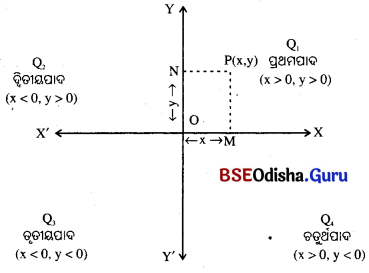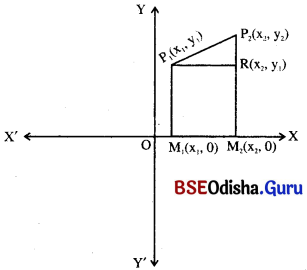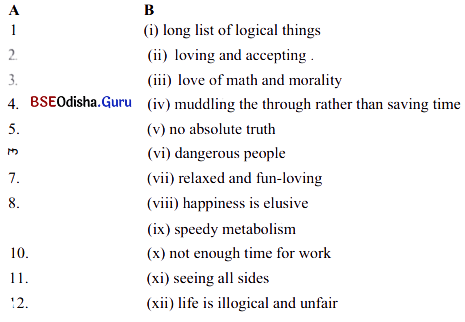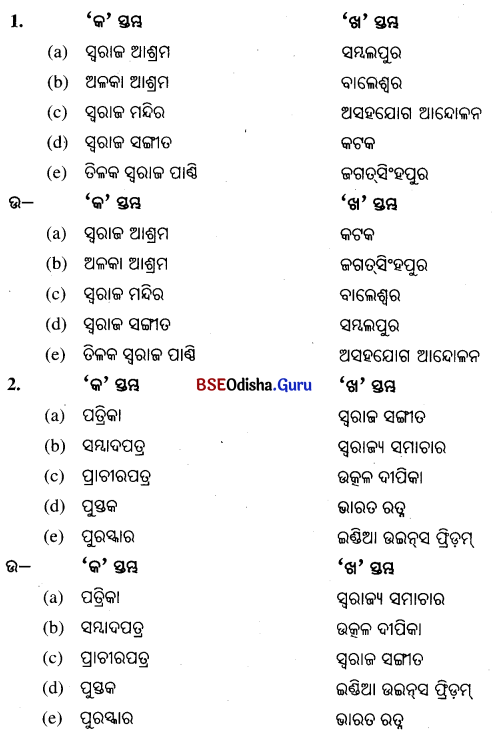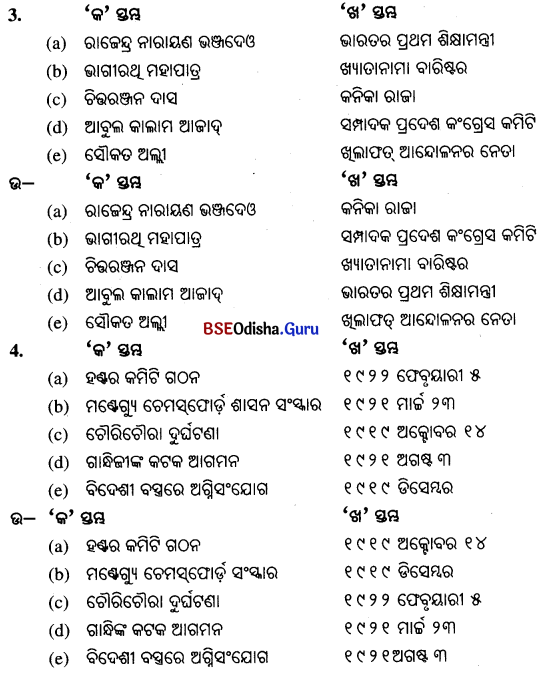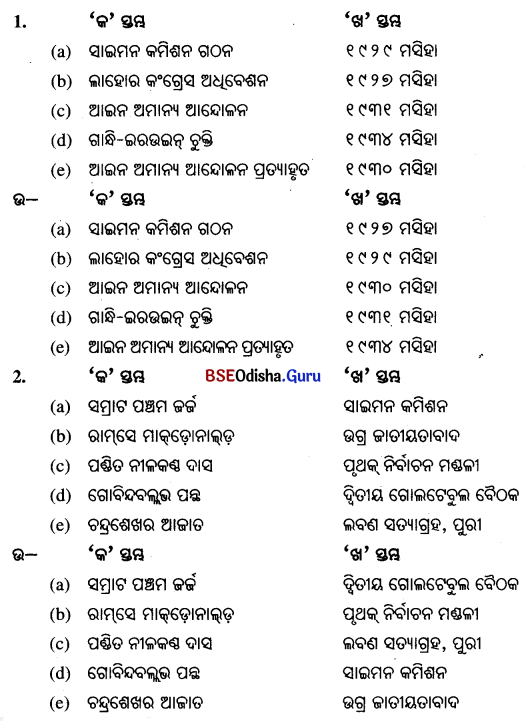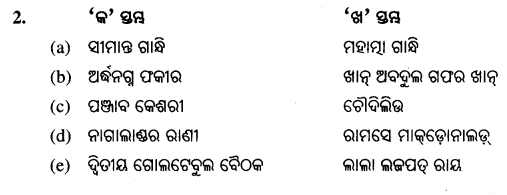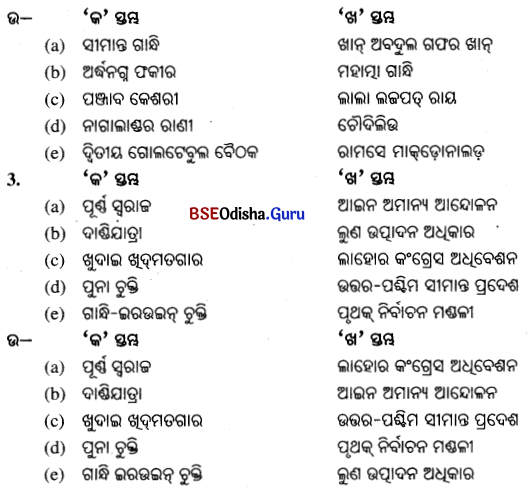Odisha State Board CHSE Odisha Class 12 Invitation to English 1 Solutions Chapter 3 The Portrait of a Lady Textbook Exercise Questions and Answers.
Class 12th Invitation English Chapter 3 The Portrait of a Lady Question Answers CHSE Odisha
The Portrait of a Lady Class 12 Questions and Answers
Unit Wise Gist and Glossary:
UNIT – I:
Gist:
The writer speaks of his own grandmother. By the time, he wrote the story, she was quite old and all her hair had been white. Her wrinkled face and body gave him a kind of surprise. Twenty years have elapsed since the writer had been with his grandmother. People said that once the old lady was as beautiful as a fairy. Her husband – the writer’s grandfather was also very handsome. His photo was being hung in the drawing room of the writer.
He was clad in a big turban and loose-fitting clothes. The writer noticed his ripe old age. Grandmother had always been short and fat, and her back was slightly bent. Wrinkles were across her face. When the writer came to know her, she had been in such a condition. She was always clad in a spotless white saree. Her silver locks were spread messily over her pale, wrinkled face. She was always in a state of saying a prayer that could not be heard distinctly. She was beautiful. She was a picture of calmness. She had a divine beauty.
ସାରମର୍ମ :
ଲେଖକ ତାଙ୍କ ନିଜ ବୁଢ଼ୀମା’ଙ୍କ ବିଷୟରେ ବର୍ଣ୍ଣନା କରିଛନ୍ତି । ଯେତେବେଳେ ସେ ଗଛଟି ଲେଖିଥିଲେ, ସେତେବେଳକୁ ତାଙ୍କ ବୁଢ଼ୀମା’ ସମ୍ପୂର୍ଣ୍ଣ ବୁଢ଼ୀ ହୋଇଯାଇଥିଲେ ଏବଂ ତାଙ୍କର ସମସ୍ତ କେଶ ଧଳା ହୋଇ ଯାଇଥିଲା । ତାଙ୍କର କୁଞ୍ଚ୍ ମୁଖମଣ୍ଡଳ ଓ ଶରୀର ତାଙ୍କୁ ଏକପ୍ରକାର ବିସ୍ମିତ କରୁଥିଲା । ଦୀର୍ଘ ୨୦ ବର୍ଷ ଧରି ସେ ତାଙ୍କ ବୁଢ଼ୀମା’ଙ୍କ ସହିତ ଥିଲେ । ଲୋକମାନେ କହୁଥିଲେ ଯେ ଏକଦା ଏହି ବୁଢ଼ୀ ସ୍ତ୍ରୀଲୋକଜଣକ ପରୀ ଭଳି ସୁନ୍ଦରୀ ଥିଲେ । ତାଙ୍କ ସ୍ଵାମୀ –ଲେଖକଙ୍କ ବୁଢ଼ାବାପା ଖୁବ୍ ସୁନ୍ଦର ଥିଲେ । ତାଙ୍କ ଫଟୋ ଲେଖକଙ୍କ ବୈଠକଘରେ ଟଙ୍ଗା ଯାଇଥିଲା । ବଡ଼ ପଗଡ଼ି ଓ ଢିଲା ପୋଷାକ ତାଙ୍କର ସମଗ୍ର ଶରୀରକୁ ଆବୃତ କରୁଥିଲା ।
ଲେଖକ ତାଙ୍କର ପରିପକ୍ଵ ବୃଦ୍ଧ ଅବସ୍ଥାକୁ ଦେଖୁ ପାରୁଥିଲେ । ବୁଢ଼ୀମା’ ଗେଡ଼ୀ ଓ ମୋଟୀ ଥିଲେ ଏବଂ ତାଙ୍କ ଅଣ୍ଟା ଅଳ୍ପ ନଇଁ ପଡ଼ିଥିଲା । ତାଙ୍କ ମୁଖମଣ୍ଡଳରେ କୁଞ୍ଚେତ ରେଖାର ଦାଗସବୁ ରହିଥିଲା । ଲେଖକ ତାଙ୍କୁ ଜାଣିବା ଦିନଠାରୁ ସେ ସେହି ଅବସ୍ଥାରେ ଥିଲେ । ସେ ସର୍ବଦା ଦାଗହୀନ ଧଳା ଶାଢ଼ି ପରିଧାନ କରୁଥିଲେ । ରୁପା ସଦୃଶ ଦେଖାଯାଉଥିବା ତାଙ୍କର ଆଲୁଳାୟିତ କେଶରାଶି ତାଙ୍କର ମଳିନ ଓ କୁଞ୍ଚ ମୁଖମଣ୍ଡଳ ଉପରେ ବିଛାଇ ହୋଇ ପଡ଼ୁଥିଲା । ସେ ସର୍ବଦା ପ୍ରାର୍ଥନା କରୁଥିବା ଅବସ୍ଥାରେ ରହୁଥିଲେ, ଯାହାକି ସ୍ପଷ୍ଟଭାବେ ଶୁଣି ହେଉ ନ ଥିଲା । ସେ ସୁନ୍ଦରୀ ଥିଲେ । ସେ ନୀରତବାର ପ୍ରତିଛବି ଥିଲେ । ତାଙ୍କଠାରେ ସ୍ୱର୍ଗୀୟ ସୁଷମା ଭରି ରହିଥିଲା ।

Glossary:
wrinkled : କୁଞ୍ଚିତ ହୋଇଯାଇଥିଲେ
pretty : attractive without being very beautiful (ଆକର୍ଷଣୀୟା)
that believe: ବିଶ୍ଵାସ କରିବା କଷ୍ଟକର ଥିଲା
portrait : photograph or painting of a person (ପ୍ରତିକୃତି)
hung : ଝୁଲୁଥି
mantlepiece : a shelf (ଏକ ଥାକ)
turban : ପଗଡ଼ି
loose-fitting clothes : ଢିଲା ପୋଷାକ
beard : ଦାଢ଼ି
at least : ଅନ୍ତତଃ
sort : kind (ପ୍ରକାର )
as if : ସତେ ଯେମିତି
lots and lots : ବହୁତ/ ଅନେକ
revolting : (here) unbelievable (ଅବିଶ୍ୱାସ୍ୟ)
quite : ସମ୍ପୂର୍ଣ୍ଣ ଭାବରେ
absurd : not logical and sensible (ଉଦ୍ଭଟ)
undignified : not respectable ( ସମ୍ମାନଯୋଗ୍ୟ ନୁହେଁ)
treated : (here) considered (ବିଚାର କରୁଥିଲେ )
the Prophets : the Saints (ସାଧୁସନ୍ଥମାନେ )
slightly : a little (ଟିକିଏ)
bent : ନଇଁ ଯାଇଥିଲେ
criss-cross : ଛକି ଚିହ୍ନ
terribly old : very old (ବହୁତ ବୁଢ଼ା)
hobbled : walked awkwardly (କଷ୍ଟରେ ଚାଲୁଥିଲେ)
spotless : a very clear (ଦାଗହୀନ)
stoop : bend (ନଇଁ ପଡ଼ିବା)
beads of rosary : ଜପାମାଳିର ମାଳି
silver : white (ଧଳା)
locks : କେଶରାଶି
scattered : spread (ବିଛାଇ ହୋଇ ପଡ଼ିଥିଲା)
untidily : ଅସଂଯତ ଭାବେ
puckered : କୁଞ୍ଚ
constantly : ଲଗାତରଭାବେ
inaudible : ଅସ୍ପଷ୍ଟ
expanse : ବିସ୍ତୀର୍ଣ୍ଣ
serenity : calmness (ସ୍ନିଗ୍ଧତା)
contentment : satisfaction (ସନ୍ତୋଷ)
Think about it:
Question 1.
Why was it hard for the author to believe that his grandmother was once young and pretty?
Answer:
It was hard for the author to believe that his grandmother was once young and pretty, because he, in spite of staying with her for the last twenty years, did not find any change in her beauty. She was as elegant as ever.
Question 2.
How did the grandfather appear in his portrait?
Answer:
His grandfather appeared at least to be a hundred-year-old person in his portrait.

Question 3.
What sort of a person did he look in his portrait?
Answer:
He looked in his portrait as a sort of person who couldn’t have a wife or children, but could only have many grandchildren.
Question 4.
How does the author portray his grandmother?
Answer:
The writer states that his grandmother, short and fat, was a little bent. Age didn’t have any impact on her age and she was pretty and very active.
Question 5.
Why does he say, “the thought was almost revolting”?
Answer:
He says “that the thought was almost revolting”, because it was quite difficult on his part to believe that his grandmother was once pretty and young.
Question 6.
The grandmother had a divine beauty. How does the author bring this out?
Answer:
The author states that the grandmother had a divine beauty because she was a picture of rare calmness, peace and contentment. Her beauty resembling ‘the winter landscape in the mountains’ is also a case in point.
UNIT – II
Gist:
The relationship between the writer and his grandmother was quite friendly. She was active to the core. Every day, she used to wake up the writer in the morning to be ready to go to school. She was uttering the monotonous song while bathing and dressing the writer. The writer liked her very much. His grandmother was going to school with him because there was a temple attached to the school. She would sit inside and read holy books. After school was over, they came back home followed by dogs growling and fighting with each other for the chapattis they flung at them.
ସାରମର୍ମ :
ଲେଖକ ଏବଂ ବୁଢ଼ୀମା’ଙ୍କ ସମ୍ପର୍କ ସମ୍ପୂର୍ଣ୍ଣରୂପେ ବନ୍ଧୁତ୍ଵପୂର୍ଣ୍ଣ ଥିଲା । ସେ ଖୁବ୍ ଚଳଚଞ୍ଚଳ ଥିଲେ । ବିଦ୍ୟାଳୟକୁ ଯିବାକୁ ପ୍ରସ୍ତୁତ ହେବା ପାଇଁ ସେ ପ୍ରତିଦିନ ସକାଳେ ଲେଖକଙ୍କୁ ଉଠାଉଥିଲେ । ଲେଖକଙ୍କୁ ଗାଧୋଇଦେବା ଓ ପୋଷାକ ପିନ୍ଧାଇବା ସମୟରେ ସେ ଗୁଣୁଗୁଣୁ ସ୍ଵରରେ ବିରକ୍ତିକର ଗୀତ ଗାଉଥିଲେ । ଲେଖକ ତାଙ୍କୁ ବହୁତ ଭଲ ପାଉଥିଲେ । ସେ ପ୍ରତିଦିନ ତାଙ୍କ ସହିତ ବିଦ୍ୟାଳୟକୁ ଯାଉଥିଲେ କାରଣ ବିଦ୍ୟାଳୟକୁ ଲାଗି ମନ୍ଦିରଟିଏ ଥିଲା । ସେ ମନ୍ଦିର ଭିତରେ ବସି ପବିତ୍ର ବହିସବୁ ପଢୁଥିଲେ । ବିଦ୍ୟାଳୟ ଛୁଟି ହେବା ପରେ ସେମାନେ ଘରକୁ ଫେରୁଥିଲେ । ସେମାନଙ୍କୁ ପଛେ ପଛେ କୁକୁରମାନେ ଆସୁଥିଲେ । ବୁଢ଼ୀମା’ ଏବଂ ଲେଖକ ସେମାନଙ୍କ ଆଡ଼କୁ ଫୋପାଡ଼ୁଥିବା ଚପାତିଗୁଡ଼ିକ ପାଇଁ ସେମାନେ ପରସ୍ପର ମଧ୍ୟରେ କଳି କରୁଥିଲେ ।

Glossary:
wake : ଉଠେଇ ଦେବା
monotonous : boring (ବିରକ୍ତିକର)
sing-song : singing in a repeated rising and falling rhythm (ବାରମ୍ବାର ଉତ୍- ପତିତ ସ୍ଵରରେ ଗୀତ ଗାଇବା)
get heart : ମୁଖସ୍ଥ କରିବା
ever bothered : never cared
fetch : ଆଣିବା
tiny : very small
earthen : ମାଟି ତିଆରି
tie : bind (ବାନ୍ଧିବା)
stale : ବାସି
attached : connected (ସଂଲଗ୍ନ ଥିଲା)
priest : ପୂଜକ
rows : ଧାଡ଼ି ଧାଡ଼ି
chorus : ମିଳିତ ସ୍ଵର
scriptures : holy books (ପବିତ୍ର ପୁସ୍ତକସବୁ )
growling : make a low guttural sound of hositility in throat (ନିମ୍ନ ସ୍ଵର ଅସନ୍ତୋଷ ପ୍ରକାଶ କରି ଶବ୍ଦ କରିବା)
Think it out:
Question 1.
What was the grandmother’s routine in the village?
Answer:
The grandmother’s routine in the village comprised waking the writer up in the morning and preparing him for school. She also went to school with him and came back home together after his school was over.
Question 2.
How did the grandmother take care of the writer during his childhood? Was she a good companion of the writer in the village?
Answer:
The grandmother took minute care of the writer during his childhood beginning from walking him up, bathing and dressing him to accompanying him to school and coming back home. She did not forget to give him breakfast. Yes, she was certainly a good companion of the writer, as his parents lived in the city.
Question 3.
What lessons did the writer learn from the village priest?
Answer:
The writer learnt the alphabet and the morning prayer from the village priest.

Question 4.
How did the grandmother spend her time at the temple?
Answer:
The grandmother spent her time at the temple in reading holy books.
Question 5.
Was she a religious person? How?
Answer:
Yes, she was a religious lady. Her morning prayer, frequent visits to the temple and reading holy books inside it arid throwing chapattis to the village dogs who followed them to their home justify this fact.
UNIT – III
Gist:
The writer and his grandmother went to the city after his parents’ comfortable settlement there. That marked a turning point in their friendship. In spite of sharing the same room, she no longer accompanied him to school. There was no sign of dogs in the streets. She started feeding sparrows in the courtyard of their city house. Years flew by. Their meeting grew much less. She enquired of him about what the teacher taught him. The writer responded to her treat they were taught English words, western science and the law of gravity.
As she could not help him in his study, she felt unhappy. When the writer went to University, he was allotted a room for his stay. The common bond of friendship suffered a setback. His grandmother accepted her loneliness with quiet resignation. She spent time with her spinning wheel. From sunrise to sunset she sat by her wheel spinning and reciting prayers. In the afternoon, she relaxed for a while to feed the sparrows. She was always getting surrounded by sparrows that were perching on her legs and shoulders. She enjoyed being in the midst of their company.
ସାରମର୍ମ :
ତାହା ସେମାନଙ୍କର ସମ୍ପର୍କରେ ଏକ ମୋଡ଼ ସୃଷ୍ଟି କଲା । ଏକା କୋଠରିରେ ରହିବା ସତ୍ତ୍ବେ, ବୁଢ଼ୀମା’ ଆଉ ତାଙ୍କ ତାହା ସେମାନଙ୍କର ସମ୍ପର୍କରେ ଏକ ମୋଡ଼ ସୃଷ୍ଟି କଲା । ଏକା କୋଠରିରେ ରହିବା ସତ୍ତ୍ବେ, ବୁଢ଼ୀମା’ ଆଉ ତାଙ୍କ ସହିତ ବିଦ୍ୟାଳୟକୁ ଯାଇପାରିଲେ ନାହିଁ । ସେଠାକାର ରାସ୍ତାମାନଙ୍କର କୁକୁରମାନଙ୍କର ଚିହ୍ନବର୍ଣ୍ଣ ନ ଥିଲା । ବୁଢ଼ୀମା’ ତାଙ୍କ ସହରରେ ଥିବା ଘର ଅଗଣାରେ ଘରଚଟିଆମାନଙ୍କୁ ଖାଇବାକୁ ଦେବା ଆରମ୍ଭ କରିଦେଲେ । ସମୟ ଗଡ଼ି ଚାଲିଲା । ସେମାନଙ୍କର ସାକ୍ଷାତ୍ କମିଯିବାକୁ ଲାଗିଲା। ଶିକ୍ଷକ କ’ଣ ପଢ଼ାଉଥିଲେ ସେ ଲେଖକଙ୍କୁ ସେ ବିଷୟରେ ପଚାରୁଥିଲେ । ଲେଖକ କହୁଥିଲେ ଯେ ସେମାନଙ୍କୁ ଇଂରାଜୀ ଶବ୍ଦ, ପାଶ୍ଚାତ୍ୟ ବିଜ୍ଞାନ ଓ ମାଧ୍ୟାକର୍ଷଣ ନିୟମ ଆଦି ପଢ଼ାଯାଉଛି ।
ଯେହେତୁ ବୁଢ଼ୀମା’ ପାଠପଢ଼ାରେ ସାହାଯ୍ୟ କରିପାରୁ ନ ଥିଲେ, ତେଣୁ ସେ ଦୁଃଖୀ ହେଲେ । ଯେତେବେଳେ ଲେଖକ ବିଶ୍ଵବିଦ୍ୟାଳୟକୁ ଗଲେ, ତାଙ୍କୁ ରହିବା ପାଇଁ ଗୋଟିଏ କୋଠରି ଦିଆଗଲା । ଏହିଠାରୁ ବନ୍ଧୁତ୍ଵର ସାଧାରଣ ବନ୍ଧନ ଛିନ୍ନ ହେଲା । ତାଙ୍କ ବୁଢ଼ୀମା’ ନିଃସଙ୍ଗତାକୁ ନୀରବ ପ୍ରତିବାଦ ସହ ଗ୍ରହଣ କରିନେଲେ । ସେ ଚରଖା ସହିତ ନିଜର ସମୟ ବିତାଇଲେ । ସୂର୍ଯ୍ୟୋଦୟଠାରୁ ସୂର୍ଯ୍ୟାସ୍ତ ପର୍ଯ୍ୟନ୍ତ ସେ ଚରଖା ପାଖରେ ବସି ରହୁଥିଲେ ଏବଂ ପ୍ରାର୍ଥନା କରୁ ଥିଲେ । ଅପରାହ୍ନରେ କିଛି ସମୟ ସେ ଘରଚଟିଆମାନଙ୍କୁ ଖୁଆଇବାରେ ବିତାଉଥିଲେ । ସେ ସର୍ବଦା ଘରଚଟିଆମାନଙ୍କ ଗହଣରେ ରହୁଥିଲେ ଯେଉଁମାନେ ତାଙ୍କ ଗୋଡ଼ ଓ କାନ୍ଧ ଉପରେ ବସି ଯାଉଥିଲେ । ସେ ସେମାନଙ୍କ ଗହଣରେ ଆନନ୍ଦ ଉପଭୋଗ କରୁଥିଲେ ।
Glossary:
comfortably settled : ସ୍ବଚ୍ଛନ୍ଦରେ ବସବାସ କଲେ
sent for : ପାଇଁ ପଠାୟାଇଛି
turning-point : ମୋଡ଼
took to : began (ଆରମ୍ଭ କଲେ)
sparrow : ଘରଚଟିଆ
years rolled by : ବର୍ଷ ପରେ ବର୍ଷ ବିତିଗଲା
western science : ପାଶ୍ଚାତ୍ୟ ବିଜ୍ଞାନ
the law of gravity: ମାଧ୍ୟାକର୍ଷଣ ନିୟମ
Archimedes principle : ଆର୍କିମେଡେଙ୍କ ନୀତି |
distressed : felt extreme anxiety or suffering (ଅତିଶୟ ଦୁଃଖ ଅନୁଭବ କଲେ )
announced : (here) told (କହିଲେ)
disturbed : confused (ଦ୍ବନ୍ଦ୍ବ ରେ ପଡ଼ିଲେ)
lewd : vulgar (ଇତର/ନୀଚ)
It …. harlots : ଏହା ଉପରେ
gentlefolk : gentle people (ଭଦ୍ରଲୋକ)
link : bond (ବନ୍ଧନ)
snapped : broke (ଭାଙ୍ଗିଗଲା|ତୁଟିଗଲା)
seclusion : loneliness (ଏକାକୀତ୍ଵ)
resignation : (here) calmness (ନୀରବରେ|ଶାନ୍ତଭାବେ)
spinning wheel : ଚରଖା
bits : pieces (ଟୁକୁରା)
veritable bedlam of
chirrupings : a genuine scene of noise or confusions caused by the chirruping of the sparrows which scattered and perched around the author’s grandmother
chirruping : ପକ୍ଷୀମାନଙ୍କର କାକଳି
shooed : drove away (ହୁଡ଼େଇଲେ / ତଡ଼ିଦେଲେ)

Think it out:
Question 1.
Why didn’t the grandmother accompany the writer to school in the city?
Answer:
The grandmother did not accompany the writer to school, because the latter went there in a motor bus.
Question 2.
Why couldn’t the grandmother help the writer with his lessons at the city school?
Answer:
The grandmother couldn’t help the writer with his lessons at the city school, because she did not know the subjects such as English, western science, the law of gravity, etc. which he was taught there.
Question 3.
Why did the lessons at the English school distress the grandmother?
Answer:
The lessons at the English school distressed the grandmother because the school didn’t teach about God and holy books to the students.
Question 4.
Why was she disturbed about music lessons at the English school?
Answer:
She was disturbed by music lessons at the English school, because, in her view, music had vulgar associations. It was meant exclusively for prostitutes, but not for gentlefolk.
Question 5.
What were the three ways in which the grandmother spent her days when the author went to University?
Answer:
The three ways in which the grandmother spent her days when the author went to University were spinning, reciting prayers and feeding the sparrows.
Question 6.
What was the happiest time of the day for her?
Answer:
The happiest time of the day for her was to be in the midst of chirruping sparrows and feeding them. Though they sat comfortably on her legs and shoulder, she smiled instead of driving them away.
Question 7.
How did she accept her seclusion?
Answer:
She calmly accepted her seclusion.
UNIT – IV
Gist:
The writer made up his mind to go to a foreign country for further studies. She knew that his grandmother would be sad. But she came to see him off at the railway station. She maintained silence. She did not show any emotion. She was totally absorbed in prayer. Her fingers kept on telling the beads of her rosary. At last, the writer departed. The parting from his grandmother was indeed heart-touching. It possibly marked the last sign of their physical contact. But that proved wrong. Five years elapsed. The writer came back home and was received at the station by his grandmother. She was speechless.
That evening he noticed a great change in her behavior. She stopped praying. She seemed to be very happy spending time with the older women folk. The following morning, she suffered from mild fever. She could not recover from it. At last, she died peacefully. This concluding unit ends on a moving note. Thousands of sparrows sitting scattered on the floor sadly witnessed the grandmother’s dead body. They neither chirruped nor touched little crumbs of bread. They flew away silently when the writer and his family members carried his grandmother’s dead body. Here ends the portrait of a pious lady.

ସାରମର୍ମ :
ଉଚ୍ଚଶିକ୍ଷା ନିମନ୍ତେ ବିଦେଶକୁ ଯିବା ପାଇଁ ଲେଖକ ମନସ୍ଥ କଲେ । ସେ ଜାଣିଥିଲେ ତାଙ୍କର ବୁଢ଼ୀମା’ ଦୁଃଖୀ ହେବେ । କିନ୍ତୁ ସେ ଲେଖକଙ୍କୁ ବିଦାୟ ଦେବା ପାଇଁ ଷ୍ଟେସନକୁ ଆସିଥିଲେ । ସେ ନୀରବ ଥିଲେ ଏବଂ କୌଣସି ଭାବପ୍ରବଣତା ଦେଖାଇ ନ ଥିଲେ । ସେ ପ୍ରାର୍ଥନା ଭିତରେ ସମ୍ପୂର୍ଣ୍ଣରୂପେ ମଜ୍ଜି ଯାଇଥିଲେ । ତାଙ୍କର ଆଙ୍ଗୁଳିଗୁଡ଼ିକ ଜପାମାଳିର ମାଳି ଗଡ଼ାଇବାରେ ଲାଗିଥିଲେ । ଶେଷରେ ଲେଖକ ବିଦାୟ ନେଲେ । ବାସ୍ତବରେ ବୁଢ଼ୀମା’ଙ୍କଠାରୁ ବିଦାୟ ମର୍ମସ୍ପର୍ଶୀ ଥିଲା । ଏହା ବୋଧହୁଏ ସେମାନଙ୍କର ଶାରୀରିକ ସଂସ୍ପର୍ଗର ଶେଷ ଚିହ୍ନ ଥିଲା । କିନ୍ତୁ ତାହା ଭୁଲ୍ ପ୍ରମାଣିତ ହେଲା। ପାଞ୍ଚ ବର୍ଷ ବିତିଗଲା । ଲେଖକ ଘରକୁ ଫେରିଲେ ଏବଂ ବୁଢ଼ୀମା’ ତାଙ୍କୁ ଷ୍ଟେସନରେ ପାଛୋଟି ନେଲେ । ସେ ନୀରବ ଥିଲେ ।
ସେଦିନ ସନ୍ଧ୍ୟାରେ ସେ ବୁଢ଼ୀମା’ଙ୍କର ବ୍ୟହାରରେ ଅଦ୍ଭୁତ ପରିବର୍ତ୍ତନ ଦେଖିଲେ । ସେ ପ୍ରାର୍ଥନା ବନ୍ଦ କରି ଦେଇଥିଲେ । ପୁରୁଖା ସ୍ତ୍ରୀଲୋକମାନଙ୍କ ସହିତ ସମୟ କଟାଇ ଖୁସିଥ୍ର ଜଣା ପଡୁଥିଲେ । ପରଦିନ ସକାଳେ ତାଙ୍କୁ ସାମାନ୍ୟ ଜ୍ଵର ହେଲା । ସେ ଏଥୁରୁ ରକ୍ଷା ପାଇ ପାରିନଥିଲେ । ଶେଷରେ ସେ ଶାନ୍ତିରେ ଆଖି ବୁଜିଲେ । ସେତେବେଳେର ଦୃଶ୍ୟ ଖୁବ୍ କରୁଣ ଥିଲା। ହଜାର ହଜାର ଘରଚଟିଆ ଚଟାଣ ଉପରେ ବିକ୍ଷିପ୍ତ ଭାବରେ ବସି ବୁଢ଼ୀମା’ଙ୍କର ମୃତ ଦେହକୁ ଅନାଉଥିଲେ । ସେମାନେ କୋଳାହଳ କରୁନଥିଲେ କିମ୍ବା ରୁଟି ଟୁକୁଡ଼ାକୁ ଛୁଇଁନଥିଲେ । ଯେତେବେଳେ ଲେଖକ ଏବଂ ତାଙ୍କର ପରିବାର ବୁଢ଼ୀମା’ଙ୍କ ଶବକୁ ନେଇଗଲେ, ସେମାନେ ନୀରବରେ ଉଡ଼ି ପଳେଇଲେ ।
Glossary:
further studies : (here) higher studies (ଉଚ୍ଚଶିକ୍ଷା)
upset : disappointed or worried (ହତାଶ ହେବା/ବିବ୍ରତ ହେବା)
sentimental : easily moved by tender feelings (ଭାବପ୍ରବଣ )
lost : ହଜିଯାଇଥିଲା
cherished : ଆନନ୍ଦ ଅନୁଭବ କରିଥିଲେ
the moist imprint : ଲୁହର ଛାପ
She …… words : The writer’s grandmother was speechless.
clasped : grasped tightly one’s hand
frivolous rebukes : affectionate scolding (ସ୍ନେହବୋଳା ଗାଳି)
thumped : hit heavily with the fist (ମୁଠାରେ ଜୋର୍ରେ ଆଘାତ କଲେ)
sagging skins : ଓହଳି ପଡ଼ିଥିବା ଚମଡ଼ା
dilapidated : old and in very bad condition (ଜରାଜୀର୍ଣ୍ଣ ଅବସ୍ଥାରେ ଥିବା)
warrior : ଯୋଦ୍ଧା
persuade : ପ୍ରବର୍ତ୍ତେଇବା
mild : ସାମାନ୍ୟ
before …. life : before the grandmother’s death (ବୁଢ଼ୀମା’ଙ୍କ ମୃତ୍ୟୁ ପୂର୍ବରୁ)
waste time : ଅଧିକ ସମୟ ନଷ୍ଟ କରିବା
protested : ପ୍ରତିବାଦ କଲୁ
ignored : ଅବଜ୍ଞା କଲେ
suspect : doubt (ସନ୍ଦେହ କରିବା)
lifeless : ନିର୍ଜୀବ
pallor : unnatural paleness ( ଅସ୍ଵାଭାବିକ ମଳିନତା)
customary : ପ୍ରଥା ଅନୁସାରେ
shroud : a piece of cloth or a sheet wrapped round a dead body
crude : rude (ନିଷ୍ଠୁର)
cremated : ଶବ ସତ୍କାର ହେଲା
lit : lighted (ଆଲୋକିତ କରୁ)
blaze : bright flame (ଉଜ୍ଜ୍ଵଳ ଦୀପ୍ତି)
golden light : ସୁନେଲି କିରଣ
stiff : hard (କଠିନ)
wrapped : covered (ଆବୃତ କଲେ)
scattered : ଛିନ୍ନଭିନ୍ନ
took no notice of: ଅନାଇଲେ ନାହିଁ
corpse : dead body (ମୃତ ଦେହ)
quietly : silently (ଚୁପ୍ଚାପ୍ ଭାବରେ)
swept : ଓଳେଇଦେଲେ

Think it out:
Question 1.
How did the grandmother see the author off at the railway station?
Answer:
The grandmother saw the author off at the railway station without showing any emotion. Besides, she silently kissed his forehead.
Question 2.
How did she receive him when he came back home from abroad?
Answer:
When he came back home from abroad, she embraced him in her arms. She was speechless and saying her prayers.
Question 3.
What were her happiest moments on the first day of his arrival?
Answer:
Her happiest moments on the first day of his arrival were in the company of her sparrows whom she fed longer and with affectionate scolding.
Question 4.
How did she celebrate his return in the evening? Does her behavior appear odd to you?
Answer:
She celebrated his return in the evening, thumping the weak skins of the ruined old drum and singing of the homecoming warriors in the company of the women of the neighborhood. Yes, her behavior appears odd to me as she stopped her prayer for the first time on that evening.
Question 5.
How did she pass away?
Answer:
She passed away peacefully, while she was laying in bed praying and telling her beads.
Question 6.
How did sparrows react when the author’s grandmother died?
Answer:
When the author’s grandmother died, the sparrows plunged into grief. They neither chirruped nor took any notice of little crumbs of bread.
Question 7.
“Next morning the sweeper swept the bread crumbs into the dust bin.” What does this line imply?
Answer:
This line implies that the sparrows were beside themselves with grief.

Post-Reading Activities:
Write a paragraph on the following points to portray the character of the grandmother :
The writer’s grandmother is a widow
She is very old – wrinkled face – her grey hair usually remains scattered on her puckered face – fat, short, and has a stoop – cannot walk straight – hobbles with her hand on her waist to balance her stoop
She belongs to a Punjabi family and lives with her son, daughter-in-law, and her grandson
She is religious – goes to the temple daily – reads holy books – tells the beads of the rosary
She is very kind – feeds the dogs with chapattis – feeds the sparrows and enjoys their company
She is a good companion – helps her grandson to get ready for school – helps him in his lessons – accompanies him to the school
She is culture loving – loves Indian culture, is fond of singing and spinning – has a strong dislike for western and scientific education
She is peaceful by nature – calm and cool – does not show resentment – becomes quiet and private instead
Her death is mourned by the family and her pet sparrows.
Answer:
The pen picture of a grandmother
The writer’s grandmother who comes from a Punjabi family is a widow. She is in a state of ripe old age. She is a deeply pious lady. She takes pleasure in walking to the temple every day, reading sacred books and telling the beads of the rosary. The writer’s grandmother epitomizes kindness. This finds a great reflection in her act of feeding the dogs and sparrows. She gives constant company to her grandson. She is an avid lover of Indian culture. She is the picture of serenity. Grandmother’s death is a stunning loss to the family and her fond sparrows.
Doing with words :
(A) Make sentences with the following expressions :
(i) the thought was almost revolting
(ii) an expanse of pure white serenity
(iii) a veritable bedlam of chirruping
(iv) frivolous rebukes
(v) the sagging skins of the dilapidated drum
Answer:
(i) the thought was almost revolting – I greatly enjoyed my grandparents’ company. The thought contrary to it was almost revolting to him.
(ii) an expanse of pure white serenity – My grandmother’s look epitomizes an expanse of pure white serenity.
(iii) a veritable bedlam of chirruping – The birds produce a veritable bedlam of chirruping.
(iv) frivolous rebukes – I am averse to your frivolous rebukes.
(v) the sagging skins of the dilapidated drum – I wanted him to beat the sagging skins of the dilapidated drum.

(B) Notice the following uses of the word ‘tell’ in the text.
1. Her fingers were busy telling the beads of her rosary.
2. I would tell her English words and little things about Western science and learning.
3. At her age one could never tell.
4. She told us that her end was near.
Given below are four different meanings of the word ‘tell’. Match each meaning with its corresponding sentence given above.
1. make something known to someone in spoken or written words
2. count while reciting
3. be sure
4. give information to somebody
Answer:
1 – 2; 2 – 1; 3 – 3; 4 – 4
(C) A popular dictionary gives the following meanings for the word ‘drop’. Match each meaning with its corresponding sentence given below :
‘drop’ :
1. a small round mass of liquid
2. a reduction
3. to fall
4. to become weaker
5. to send a letter
Sentences :
(a) The bottle dropped and broke to pieces.
(b) Drop a postcard to me about your choice of career.
(c) A heavy shower of rain caused a drop in temperature.
(d) She shed a few drops of tears on the grave of her pet.
(e) His voice dropped to a whisper.
Answer:
1 – (d); 2 – (c); 3 – (a); 4 – (e); 5 – (b).

CHSE Odisha Class 12 English The Portrait of a Lady Important Questions and Answers
I. Multiple-Choice Questions (MCQs) with Answers:
Question 1.
The author of ‘The Portrait of a Lady’ is ______________.
(A) Khushwant Singh
(B) R.K. Narayan
(C) Manoj Das
(D) Steve Jobs
Answer:
(A) Khushwant Singh
Question 2.
The lady portrayed in the story is
(A) Grandmother
(B) Sister
(C) Mother
(D) Daughter
Answer:
(A) Grandmother
Question 3.
The grandfather in the portrait hung on the wall looked like
(A) old, thin and wrinkly
(B) young, handsome, well built
(C) old, long white beard worn a big turban
(D) None of the above
Answer:
(C) old, long white beard worn a big turban
Question 4.
Grandmother looked
(A) Fat, slightly bent
(B) Old, short, slightly bent, fat
(C) Long, fat, slightly bent
(D) Old, fat, long
Answer:
(B) Old, short, slightly bent, fat
Question 5.
The author’s parents left him with his grandmother when
(A) he was an infant
(B) he was a child
(C) he was a young man
(D) he was a teenager
Answer:
(B) he was a child
Question 6.
The animal grandmother used to feed in the village is
(A) cats
(B) dogs
(C) cows
(D) sparrows
Answer:
(B) dogs

Question 7.
The parents of the author were living in
(A) abroad
(B) other villages
(C) other states
(D) City
Answer:
(D) City
Question 8.
In the temple, grandmother was
(A) doing meditation
(B) reading scriptures
(C) singing religious prayers
(D) teaching other kids religious prayer
Answer:
(B) reading scriptures
Question 9.
The author went to study in the city in
(A) English school in motor bus
(B) by walking
(C) Hindu school
(D) None of these
Answer:
(A) English school in motor bus
Question 10.
The grandmother went to school with the author because
(A) the school was attached to the temple
(B) to guard him
(C) to see how he was reading
(D) None of the above
Answer:
(A) the school was attached to the temple
Question 11.
In the courtyard of the city house, grandmother used to feed
(A) dogs
(B) cats
(C) sparrows
(D) cows
Answer:
(C) sparrows
Question 12.
Grandmother after listening to the things taught in the English schools becomes unhappy because
(A) She could not help the writer with his lessons.
(B) She desired science.
(C) She did not want the writer should learn English
(D) None of the above
Answer:
(A) She could not help the writer with his lessons.
Question 13.
The common link of friendship was suspended when the writer ______________.
(A) went up to the university
(B) went up in a foreign trip
(C) married
(D) None of these
Answer:
(A) went up to the university
Question 14.
The grandmother died
(A) peacefully telling beads laying on the bed
(B) in the hospital
(C) while sleeping
(D) None of the above
Answer:
(A) peacefully telling beads laying on the bed
Question 15.
Why did the grandmother keep one hand on her waist?
(A) to pick up things easily
(B) to balance her stoop
(C) to correct her posture
(D) to eat food
Answer:
(B) to balance her stoop

Question 16.
The narrator had known his grandmother to be old and wrinkled for ______________.
(A) ten years
(B) thirty years
(C) twenty years
(D) twenty-five years
Answer:
(C) twenty years
Question 17.
The portrait of grandfather was hanging in the ______________.
(A) drawing room
(B) store room
(C) bedroom
(D) kitchen
Answer:
(A) drawing room
Question 18.
What did the author eat for breakfast?
(A) rice and curd
(B) thick bread with butter
(C) apples and bread
(D) thick and stale chapatis with a little butter and sugar spread on it
Answer:
(D) thick and stale chapatis with a little butter and sugar spread on it
Question 19.
The author treated the stories of grandmother’s youth and beauty as ______________.
(A) poetry
(B) fables
(C) drama
(D) None of these
Answer:
(B) fables
Question 20.
How did the grandmother spend her afternoon every day?
(A) by feeding hundreds of sparrows
(B) by taking a nap
(C) by talking to the author’s mother
(D) by going to temple
Answer:
(A) by feeding hundreds of sparrows
Question 21.
What change came in the grandmother’s evening time?
(A) she would sleep easily
(B) she would go for a walk
(C) she collected the women of the neighborhood
(D) she would talk with the author’s parents
Answer:
(C) she collected the women of the neighborhood
Question 22.
How did the grandmother spend her time in the city?
(A) spinning the wheel
(B) reading scriptures
(C) feeding dogs
(D) taking to neighbors
Answer:
(A) spinning the wheel
Question 23.
What did the village priest teach the students?
(A) scriptures
(B) alphabet and morning prayer
(C) moral lessons
(D) science
Answer:
(B) alphabet and morning prayer

Question 24.
What is the meaning of the word ‘chorus’?
(A) individually
(B) in a group
(C) between two people
(D) working hard
Answer:
(B) in a group
Question 25.
What was the grandmother doing inside the temple when the author was studying in the temple veranda?
(A) Reading scriptures
(B) Listening to the prayers
(C) Singing prayers
(D) Performing puja
Answer:
(A) Reading scriptures
Question 26.
Who would meet the author and his grandmother at the temple door?
(A) Sparrows
(B) Village monkeys
(C) Village dogs
(D) Village beggars
Answer:
(C) Village dogs
Question 27.
What was the turning point in the relationship of the author and his grandmother?
(A) The grandmother’s death
(B) The marriage of the author
(C) The separation of the author from his grandmother
(D) Their shifting from the village to the city
Answer:
(D) Their shifting from the village to the city
Question 28.
What did the grandmother do in her leisure in the city?
(A) Sang prayers
(B) Read scriptures
(C) Fed sparrows
(D) Fed pigeons
Answer:
(C) Fed sparrows
Question 29.
What was/were not taught to the author at the English school?
(A) English words
(B) Western science
(C) Scriptures
(D) Music lessons
Answer:
(A) English words
Question 30.
Why was the grandmother distressed with the teachings in English school?
(A) There was much emphasis on the alphabet
(B) There were no lessons on god and the scriptures
(C) Due to teaching music
(D) Due to teaching science
Answer:
(B) There were no lessons on god and the scriptures
Question 31.
When was the common link of friendship between the author and his grandmother snapped?
(A) When the author went abroad
(B) When the author joined the army
(C) When the author went to university
(D) When the author got a job
Answer:
(C) When the author went to university

Question 32.
What was the opinion of the grandmother about music?
(A) She supported music classes
(B) Music had a soothing effect
(C) Music had lewd associations
(D) Music was essential for the overall development
Answer:
(C) Music had lewd associations
Question 33.
What did the grandmother accept with resignation?
(A) Separation from the author
(B) Her fate
(C) Her ill-health
(D) Her approach to death
Answer:
(A) Separation from the author
Question 34.
How did the grandmother relax in the afternoon?
(A) By singing songs
(B) By reciting prayers
(C) By spinning the wheel
(D) By feeding the sparrows
Answer:
(D) By feeding the sparrows
Question 35.
Which was the happiest half-hour of the day for the grandmother?
(A) The time spent in the temple
(B) The time spent with the neighbors
(C) The time spent with the sparrows
(D) The time spent with the author
Answer:
(C) The time spent with the sparrows
Question 36.
What is the meaning of the sentence, “at her age one could never tell”?
(A) She was very old
(B) She did not eat much
(C) She did not behave properly
(D) She was so old that she could die at any moment
Answer:
(D) She was so old that she could die at any moment
Question 37.
Choose an appropriate word for the word ‘sentimental’ from the following:
(A) happy
(B) joyful
(C) emotional
(D) mournful
Answer:
(C) emotional
Question 38.
While going abroad what did the author cherish the most?
(A) Love of his family
(B) Care of his mother
(C) Affection of his grandmother
(D) His grandmother’s kiss on his forehead
Answer:
(D) His grandmother’s kiss on his forehead
Question 39.
When did the author come back home?
(A) After four years
(B) After five years
(C) After six years
(D) After two years
Answer:
(B) After five years
Question 40.
What is the synonym of the word ‘frivolous’?
(A) carefree
(B) serious
(C) funny
(D) mysterious
Answer:
(A) carefree
Question 41.
What is the meaning of the word ‘rebuke’?
(A) to hang
(B) to scold lightly
(C) to pray for mercy
(D) to learn something
Answer:
(B) to scold lightly

Question 42.
What change came over the author’s grandmother in the evening?
(A) she did not pray
(B) she started dancing wildly
(C) she collected drums from the neighborhood
(D) all of the above
Answer:
(A) she did not pray
Question 43.
What did the grandmother sing collecting the women of the neighborhood?
(A) Her prayers
(B) Home-coming of warriors
(C) Reception song for the author
(D) Scriptures
Answer:
(B) Home-coming of warriors
Question 44.
What happened the next morning?
(A) The grandmother became unconscious
(B) The author talked to his grandmother
(C) The grandmother was taken ill
(D) The grandmother started to sing again
Answer:
(C) The grandmother was taken ill
Question 45.
What did the grandmother tell all the family members?
(A) to call the doctor
(B) to bring her holy books
(C) to bring her a new rosary
(D) that her end was near
Answer:
(D) that her end was near
Question 46.
Why did the grandmother say that she was not going to talk to anyone?
(A) because she cannot speak
(B) because she wanted to pray
(C) because she wanted to die peacefully
(D) because she wanted to talk with the angels
Answer:
(B) because she wanted to pray
Question 47.
How did they know that she was dead?
(A) she closed her eyes
(B) the rosary fell from her fingers
(C) the doctor declared her dead
(D) her last prayer was said loudly
Answer:
(B) the rosary fell from her fingers
Question 48.
What was the custom regarding dead people?
(A) to cover the dead body with a red shroud
(B) to cover the dead body with a white shroud
(C) to cover the dead body with a black shroud
(D) to keep the dead body uncovered
Answer:
(A) to cover the dead body with a red shroud
Question 49.
Why did the family members stop halfway in the courtyard?
(A) as there were hundreds of ants
(B) as there were thousands of sparrows
(C) as there were thousands of monkeys
(D) as there were hundreds of dogs
Answer:
(B) as there were thousands of sparrows
Question 50.
Why did the sparrows not take notice of the bread crumbs lying on the floor?
(A) they never ate bread crumbs
(B) the bread crumbs were stale
(C) they were also mourning the death of their grandmother
(D) they had come to eat chapattis
Answer:
(C) they were also mourning the death of their grandmother

Question 51.
The bottle dropped and broke to pieces. (Pick out the correct dictionary meaning of the underlined word from the following)
(A) To fall
(B) To go down
(C) To become weaker
(D) To slip away
Answer:
(A) To fall
Question 52.
Drop me a postcard when you get there. (Pick out the correct dictionary meaning of the underlined word from the following)
(A) To fall
(B) To go down
(C) To send a letter
(D) To send away
Answer:
(C) To send a letter
Question 53.
Heavy rain can cause a drop in temperature. (Pick out the correct dictionary meaning of the underlined word from the following)
(A) A reduction
(B) To fall
(C) To become weaker
(D) To slip away
Answer:
(A) A reduction
Question 54.
A few drops of tears don’t wash out sins. (Pick out the correct dictionary meaning of the underlined word from the following)
(A) Shedding tears
(B) A small round mass of liquid
(C) Repentance
(D) Liquid substance
Answer:
(B) A small round mass of liquid
Question 55.
His voice dropped to a whisper. (Pick out the correct dictionary meaning of the underlined Word from the following)
(A) To fall
(B) To go down
(C) To become weaker
(D) A reduction
Answer:
(C) To become weaker
II. Short Type Questions with Answers:
Question 1.
Why was it hard for the author to believe that his grandmother was once young and pretty?
Answer:
It was hard for the author to believe that his grandmother was once young and pretty, because he, in spite of staying with her for the last twenty years, did not find any change in her beauty. She was as elegant as ever.

Question 2.
How does the author portray his grandmother?
Answer:
The writer states that his grandmother, short and fat, was a little bent. Age didn’t have any impact on her age arid she was pretty and very active.
Question 3.
The grandmother had a divine beauty. How does the author bring this out?
Answer:
The author states that the grandmother had a divine beauty because she was a picture of rare calmness, peace and contentment. Her beauty resembling ‘the winter landscape in the mountains’ is also a case in point.
Question 4.
What was the grandmother’s routine in the village?
Answer:
The grandmother’s routine in the village comprised waking the writer up in the morning and preparing him for school. She also went to school with him and came back home together after school was over.
Question 5.
How did the grandmother take care of the writer during his childhood? Was she a good companion of the writer in the village?
Answer:
The grandmother took minute care of the writer during his childhood beginning from waking him up, bathing and dressing him to accompanying him to school and coming back home. She did not forget to give him breakfast. Yes, she was certainly a good companion of the writer, as his parents lived in the city.
Question 6.
Was she a religious person? How?
Answer:
Yes, she was a religious lady. Her morning prayer, frequent visits to the temple and reading holy books inside it and throwing chapters to the village dogs who followed them to their home justify this fact.
Question 7.
Why couldn’t the grandmother help the writer with his lessons at the city school?
Answer:
The grandmother couldn’t help the writer with his lessons at the city school, because she did not know the subjects such as English, western science, the law of gravity, etc. which he was taught there.
Question 8.
Why did the lessons at the English school distress the grandmother?
Answer:
The lessons at the English school distressed the grandmother because the school didn’t teach about God and holy books to the students.
Question 9.
Why was she disturbed about music lessons at the English school?
Answer:
She was disturbed by music lessons at the English school, because, in her view, music had vulgar associations. It was meant exclusively for prostitutes, but not for gentlefolk.
Question 10.
What were the three ways in which the grandmother spent her days when the author went to University?
Answer:
The three ways in which the grandmother spent her days when the author went to University were spinning, reciting prayers and feeding the sparrows.

Question 11.
What was the happiest time of the day for her?
Answer:
The happiest time of the day for her was to be in the midst of chirruping sparrows and feeding them. Though they sat comfortably on her legs and shoulder, she smiled instead of driving them away.
Question 12.
What were her happiest moments on the first day of his arrival?
Answer:
Her happiest moments on the first day of his arrival were in the company of her sparrows whom she fed longer and with affectionate scolding.
Question 13.
How did she celebrate his return in the evening? Does her behavior appear odd to you?
Answer:
She celebrated his return in the evening, thumping the weak skins of the ruined old drum and singing of the homecoming warriors in the company of the women of the neighborhood. Yes, her behavior appears odd to me as she stopped her prayer for the first time that evening.
Introducing the Author:
Khuswant Singh (1915) is one of the most versatile writers of our time. He has distinguished himself as an outstanding journalist, novelist, historian, and short-story writer. A writer of international repute, Singh is known for his inimitable style, biting irony, and firebrand candidness. He has a deep understanding of the life around him. His works include The Mask of Vishnu, Train to Pakistan, which won the Grove Press Indian Fiction prize, The Voice of God and Other Stories, I shall not hear the Nightingale, Many Moods and Many Faces, A History of the Sikhs, A Bride for the Sahib and Other Stories, Delhi, The Company of Women and several collections of works.
Aspects of Khuswant Singh as a short-story writer and essayist indicate his versatility. His short stories show the felicity of his expression, his capacity for clear and realistic portrayal, and his unique lightness of touch. He has the qualities of the ideal short-story writer: ingenuity, compression and originality, and also a touch of fantasy. His art is different from that of Raja Rao, Mulk Raj Anand, R. K. Narayan, and Pravas Jhabvala.
About the Topic:
‘The Portrait of a Lady’ gives a vivid account of the writer’s, grandmother. She was affectionate, protective, and caring. The writer throws light on the three phases of the relationship he had had with his grandmother. In the first phase, she took care of the writer in the village and he was close to her. The second phase deals with his estrangement from her during his study in a city school. The last one dwells upon the snapping of the common link of friendship between them when he went to a foreign country for further studies. The writer presents a moving picture of the sparrows when his grandmother’s life came to an end.

Summary:
The writer speaks of his own grandmother. By the time, he wrote the story, she was quite old and all her hair had been white. Her wrinkled face and body gave him a kind of surprise. For twenty years, the writer was with his grandmother. People said that once the old lady was as beautiful as a fairy. Her husband – the writer’s grandfather was also very handsome. His photo was being hung in the drawing room of the writer. He was clad in a big turban and loose-fitting clothes. The writer noticed his ripe old age.
Grandmother had always been short and fat, and her back was slightly bent. Wrinkles were across her face. When the writer came to know her, she had been in such a condition. She was always clad in a spotless white saree. Her silver locks. were spread messily over her pale, wrinkled face. She was always in a state of saying a prayer that could not be heard distinctly. She was beautiful. She was a picture of calmness. She had a divine beauty. Both the writer and his grandmother were good companions.
His parents had left him with his grandmother at the village. They were in the city. Every day, she used to wake up the writer in the morning to be ready to go to school. She was uttering the monotonous song while bathing and dressing the writer. He liked her very much. His grandmother was going to school with him because there was a temple attached to the school. She would sit inside the temple and read holy books. The grandmother was a pious lady. When the writer’s parents were settled in the city, they sent for them.
That marked a turning point in their friendship. Years flew by. Their meeting grew less. Both the writer and his grandmother started spending days separately and the writer became separated from the close relationship with his grandmother. When he reported to her about the music lesson he was being taught his grandma was confused because she knew that music had been associated with harlots. She said nothing but her silence was louder than words. When the writer went to University, he was allotted a room for his stay.
The common bond of friendship was snapped. His grandmother accepted her loneliness with quiet resignation. She spent time with her spinning wheel. From sunrise to sunset she sat by her wheel spinning and reciting prayers. In the afternoon, she relaxed for a while to feed the sparrows. She was always getting surrounded by sparrows that were perching on her legs and shoulders. She enjoyed being in their company. When the writer decided to go to a foreign country for further studies, he thought his grandmother would be disappointed.
But she came to leave him at the railway station but did not talk or show any emotion. She was totally absorbed in prayer and her fingers were busy telling the beads of her rosary. After five years, he came back home and was received at the station by his grandmother. It seemed as if time had left no impact on her age. The author could feel her pulse as usual and the sparrows were with her. That evening she was seen very happy spending time with the older women folk. The next day morning she was found ill. The doctor was called for and he told them that the fever was mild and she would be well within a short time.
But she told others that her last time had come. She lay peacefully in bed saying prayers and telling her beads. Next time she breathed her last. Then the funeral arrangements and proceedings went on. The dead body of the grandmother was covered with a red shroud. They brought a crude stretcher to take her to be cremated. By that time, thousands of sparrows sat scattered on the floor. There was no chirruping. The picture of the grief-stricken sparrows was really poignant. The writer’s mother threw broken little crumbs of bread to them, but in vain. They never took any notice of the bread. With the departure of grandmother’s dead body, the sparrows flew away in silence.

ସାରାଂଶ:
ଲେଖକ ତାଙ୍କ ନିଜ ବୁଢ଼ୀମା’ଙ୍କ ବିଷୟରେ ବର୍ଣ୍ଣନା କରିଛନ୍ତି । ଯେତେବେଳେ ସେ ଗଳ୍ପଟି ଲେଖିଥିଲେ, ସେତେବେଳକୁ ତାଙ୍କ ବୁଢ଼ୀମା’ ସମ୍ପୂର୍ଣ୍ଣ ବୁଢ଼ୀ ହୋଇଯାଇଥିଲେ ଏବଂ ତାଙ୍କର ସମସ୍ତ କେଶ ଧଳା ହୋଇଯାଇଥିଲା । ତାଙ୍କର କୁଞ୍ଚ୍ ମୁଖମଣ୍ଡଳ ଓ ଶରୀର ତାଙ୍କୁ ଏକପ୍ରକାର ବିସ୍ମିତ କରୁଥିଲା । ଦୀର୍ଘ ୨୦ ବର୍ଷ ଧରି ସେ ତାଙ୍କ ବୁଢ଼ୀମା’ଙ୍କ ସହିତ ଥିଲେ । ଲୋକମାନେ କହୁଥିଲେ ଯେ ଏକଦା ଏହି ବୁଢ଼ୀ ସ୍ତ୍ରୀଲୋକଜଣକ ପରୀ ଭଳି ସୁନ୍ଦରୀ ଥିଲେ । ତାଙ୍କ ସ୍ଵାମୀ –ଲେଖକଙ୍କ ବୁଢ଼ାବାପା ଖୁବ୍ ସୁନ୍ଦର ଥିଲେ । ତାଙ୍କ ଫଟୋ ଲେଖକଙ୍କ ବୈଠକଘରେ ଟଙ୍ଗା ଯାଇଥିଲା । ବଡ଼ ପଗଡ଼ି ଓ ଢିଲା ପୋଷାକ ତାଙ୍କର ସମଗ୍ର ଶରୀରକୁ ଆବୃତ କରୁଥିଲା । ଲେଖକ ତାଙ୍କର ପରିପକ୍ଵ ବୃଦ୍ଧ ଅବସ୍ଥାକୁ ଦେଖ୍ ପାରୁଥିଲେ । ବୁଢ଼ୀମା’ ଗେଡ଼ୀ ଓ ମୋଟୀ ଥିଲେ ଏବଂ ତାଙ୍କ ଅଣ୍ଟା ଅଳ୍ପ ନଇଁ ପଡ଼ିଥିଲା ।
ତାଙ୍କ ମୁଖମଣ୍ଡଳରେ କୁଞ୍ଚ ରେଖାର ଦାଗସବୁ ରହିଥିଲା । ଲେଖକ ତାଙ୍କୁ ଜାଣିବା ଦିନଠାରୁ ସେ ସେହି ଅବସ୍ଥାରେ ଥିଲେ । ସେ ସର୍ବଦା ଦାଗହୀନ ଧଳା ଶାଢ଼ି ପରିଧାନ କରୁଥିଲେ । ରୁପା ସଦୃଶ ଦେଖାଯାଉଥିବା ତାଙ୍କର ଆଲୁଳାୟିତ କେଶରାଶି ତାଙ୍କର ମଳିନ ଓ କୁଞ୍ଚ୍ ମୁଖମଣ୍ଡଳ ଉପରେ ବିଛାଇ ହୋଇ ପଡ଼ୁଥିଲା । ସେ ସର୍ବଦା ପ୍ରାର୍ଥନା କରୁଥିବା ଅବସ୍ଥାରେ ରହୁଥିଲେ, ଯାହାକି ସ୍ପଷ୍ଟଭାବେ ଶୁଣି ହେଉ ନ ଥିଲା । ସେ ସୁନ୍ଦରୀ ଥିଲେ । ସେ ନୀରତବାର ପ୍ରତିଛବି ଥିଲେ । ତାଙ୍କଠାରେ ସ୍ଵର୍ଗୀୟ ସୁଷମା ଭରି ରହିଥିଲା । ଲେଖକ ଏବଂ ତାଙ୍କ ବୁଢ଼ୀମା’ ଉତ୍ତମ ବନ୍ଧୁ ଥିଲେ । ତାଙ୍କୁ ତାଙ୍କ ବାପାମା’ ଗାଁରେ ତାଙ୍କ ବୁଢ଼ୀମା’ଙ୍କ ପାଖରେ ଛାଡ଼ି ଚାଲି ଯାଇଥିଲେ । ସେମାନେ ସହରରେ ରହୁଥିଲେ । ପ୍ରତ୍ୟେକ ଦିନ ସକାଳେ ଲେଖକଙ୍କୁ ତାଙ୍କ ବୁଢ଼ୀମା’ ଶେଯରୁ ଉଠାଇ ସ୍କୁଲ୍ ଯିବାପାଇଁ ପ୍ରସ୍ତୁତ କରାଉଥିଲେ ।
ଲେଖକଙ୍କୁ ଗାଧୋଇ ଦେବା ଓ ପୋଷାକ ପିନ୍ଧାଇବା ସମୟରେ ସେ ବିରକ୍ତିକର ଗୀତ ଗାଉଥିଲେ । ଲେଖକ ତାଙ୍କୁ ଖୁବ୍ ଭଲ ପାଆନ୍ତି । ତାଙ୍କ ବୁଢ଼ୀମା’ ତାଙ୍କ ସହିତ ସ୍କୁଲ୍ ଯାଉଥିଲେ କାରଣ ସ୍କୁଲ୍କୁ ଲାଗି ମନ୍ଦିରଟିଏ ଥିଲା । ସେ ମନ୍ଦିର ଭିତରେ ବସୁଥିଲେ ଏବଂ ଧର୍ମଗ୍ରନ୍ଥ ପଢ଼ୁଥିଲେ । ତାଙ୍କ ବୁଢ଼ୀମା’ ଜଣେ ଧାର୍ମିକ ମହିଳା ଥିଲେ । ଲେଖକଙ୍କ ପିତାମାତା ସହରରେ ପ୍ରତିଷ୍ଠିତ ହୋଇଗଲା ପରେ ସେମାନଙ୍କୁ ଡକାଇ ପଠାଇଲେ । ଏହିଠାରୁ ବନ୍ଧୁତ୍ଵରେ ଗୋଟିଏ ନୂତନ ମୋଡ଼ ସୃଷ୍ଟି ହେଲା । ସମୟ ଗଡ଼ି ଚାଲିଲା । ସେମାନଙ୍କ ଦେଖାସାକ୍ଷାତ୍ କମିଗଲା । ଲେଖକ ଏବଂ ତାଙ୍କ ବୁଢ଼ୀମା’ ଦୁହେଁ ନିଜର ସମୟ ଅଲଗା ଭାବେ ବିତାଇଲେ ଏବଂ ଲେଖକ ଓ ତାଙ୍କ ବୁଢ଼ୀମା’ଙ୍କ ମଧ୍ୟରେ ଥିବା ନିବିଡ଼ ସମ୍ପର୍କ ବିଛିନ୍ନ ହେଲା । ଯେତେବେଳେ ସେ ତାଙ୍କୁ ଗୀତ ଶିଖ୍ ବିଷୟରେ କହିଲେ, ତାଙ୍କ ବୁଢ଼ୀମା’ ଦ୍ବନ୍ଦ୍ବରେ ପଡ଼ିଲେ କାରଣ ବାରାଙ୍ଗନାମାନଙ୍କ ସହିତ ଗୀତର ସମ୍ପର୍କ ରହିଛି ବୋଲି ସେ ଜାଣିଥିଲେ ।
ସେ କିଛି କହି ନଥିଲେ କିନ୍ତୁ ତାଙ୍କର ନୀରବତା କଥାଠାରୁ ଅଧିକ ଥିଲା । ଯେତେବେଳେ ଲେଖକ ବିଶ୍ଵବିଦ୍ୟାଳୟକୁ ଗଲେ, ତାଙ୍କୁ ରହିବା ପାଇଁ ଗୋଟିଏ କୋଠରି ଦିଆଗଲା । ଏହିଠାରୁ ବନ୍ଧୁତ୍ଵର ସାଧାରଣ ବନ୍ଧନ ଛିନ୍ନ ହେଲା । ତାଙ୍କ ବୁଢ଼ୀମା’ ନିଃସଙ୍ଗତାକୁ ନୀରବ ପ୍ରତିବାଦ ସହ ଗ୍ରହଣ କରିନେଲେ । ସେ ଚରଖା ସହିତ ନିଜର ସମୟ ବିତାଇଲେ । ସୂର୍ଯ୍ୟୋଦୟଠାରୁ ସୂର୍ଯ୍ୟାସ୍ତ ପର୍ଯ୍ୟନ୍ତ ସେ ଚରଖା ପାଖରେ ବସି ରହୁଥିଲେ ଏବଂ ପ୍ରାର୍ଥନା କରୁଥିଲେ । ଅପରାହ୍ନରେ କିଛି ସମୟ ସେ ଘରଚଟିଆମାନଙ୍କୁ ଖୁଆଇବାରେ ବିତାଉଥିଲେ । ସେ ସର୍ବଦା ଘରଚଟିଆମାନଙ୍କ ଗହଣରେ ରହୁଥିଲେ ଯେଉଁମାନେ କି ତାଙ୍କ ଗୋଡ଼ ଓ କାନ୍ଧ ଉପରେ ବସି ଯାଉଥିଲେ । ସେ ସେମାନଙ୍କ ଗହଣରେ ଆନନ୍ଦ ଉପଭୋଗ କରୁଥିଲେ । ଯେତେବେଳେ ଲେଖକ ଅଧିକ ପଢ଼ିବାପାଇଁ ବିଦେଶ ଯିବାକୁ ସ୍ଥିର କଲେ, ସେ ଭାବିଲେ ତାଙ୍କ ବୁଢ଼ୀମା’ ଦୁଃଖପ୍ରକାଶ କରିବେ ।
କିନ୍ତୁ ସେ ତାଙ୍କୁ ରେଳ ଷ୍ଟେସନରେ ଛାଡ଼ିବା ପାଇଁ ଆସିଥିଲେ ମଧ୍ୟ କିଛି କହିଲେ ନାହିଁ କି ଭାବପ୍ରବଣତା ଦେଖାଇଲେ ନାହିଁ । ସେ ସମ୍ପୂର୍ଣ୍ଣଭାବେ ପ୍ରାର୍ଥନା ଭିତରେ ମଜ୍ଜି ଯାଇଥିଲେ ଏବଂ ତାଙ୍କ ଆଙ୍ଗୁଳିରେ ଜପାମାଳିର ମାଳା ଗଡ଼ାଉଥିଲେ । ପାଞ୍ଚ ବର୍ଷ ପରେ ସେ ଘରକୁ ଫେରି ଆସିଲେ ଏବଂ ବୁଢ଼ୀମା’ ତାଙ୍କୁ ଷ୍ଟେସନରୁ ପାଛୋଟି ଆଣିଥିଲେ । ସମୟ ତାଙ୍କ ବୟସ ଉପରେ କୌଣସି ପ୍ରଭାବ ପକାଇବା ଭଳି ଜଣାପଡୁନଥିଲା । ଲେଖକ ଅନୁଭବ କରିପାରୁଥିଲେ ତାଙ୍କ ନାଡ଼ି ଠିକ୍ ଥିଲା ଏବଂ ଘରଚଟିଆମାନେ ତାଙ୍କ ସହିତ ଥିଲେ । ସେହି ସନ୍ଧ୍ୟାରେ ସେ ବହୁତ ଖୁସି ଥିଲେ ଏବଂ ବୟସ୍କ ମହିଳାମାନଙ୍କ ସହ ସମୟ ବିତାଉଥିଲେ । ପରଦିନ ସକାଳେ ସେ ଅସୁସ୍ଥ ହୋଇଥିବାର ଜଣାପଡ଼ିଲା । ଡାକ୍ତର ଡକାଗଲା ଏବଂ ସେ କହିଲେ ଜ୍ଵର ସାମାନ୍ୟ ଅଛି ଓ ସେ ଅଳ୍ପ ସମୟ ମଧ୍ୟରେ ଭଲ ହୋଇଯିବେ ।
କିନ୍ତୁ ବୁଢ଼ୀମା’ କହିଲେ ତାଙ୍କର ଶେଷ ସମୟ ଆସିଗଲାଣି । ଶାନ୍ତିରେ ବିଛଣାରେ ପଡ଼ିରହି ସେ ପ୍ରାର୍ଥନା କରୁଥିଲେ ଏବଂ ମାଳାଜପ କରୁଥିଲେ । ପରେ ପରେ ସେ ଶେଷ ନିଃଶ୍ଵାସ ତ୍ୟାଗ କଲେ । ତା’ପରେ ବୁଢ଼ୀମାଙ୍କର ଅନ୍ତିମ ସଂସ୍କାର ପାଇଁ ବନ୍ଦୋବସ୍ତ କରାଗଲା । ତାଙ୍କ ମୃତ ଦେହକୁ ଲାଲ୍ ଲୁଗାରେ ଆବୃତ କରାଗଲା । ତାଙ୍କୁ ଦାହ କରିବାକୁ ନେବା ପାଇଁ ଏକ ପୁରୁଣା କୋକେଇ ଅଣାଗଲା । ସେତେବେଳେ ହଜାରହଜାର ଘରଚଟିଆ ଚଟାଣ ଉପରେ ଏଣେତେଣେ ବସିଥା’ନ୍ତି । ସେମାନେ କୌଣସି ଶବ୍ଦ କରୁ ନ ଥିଲେ । ଦୁଃଖ- କାତର ପକ୍ଷୀମାନଙ୍କର ଦୃଶ୍ୟ ଥିଲା ବାସ୍ତବିକ ମର୍ମସ୍ପର୍ଶୀ । ଲେଖକଙ୍କର ମା’ ସେମାନଙ୍କ ପାଖକୁ କେତେ ଖଣ୍ଡ ରୁଟି ଟୁକୁଡ଼ା ପକାଇ ଦେଲେ । କିନ୍ତୁ ସେମାନେ ରୁଟି ଟୁକୁଡ଼ାକୁ ଆଡ଼ ଆଖିରେ ଚାହିଁଲେ ନାହିଁ । ବୁଢ଼ୀମା’ର ମୃତ ଦେହ ନିଆଗଲାପରେ ଘରଚଟିଆମାନେ ନୀରବରେ ଉଡ଼ିଗଲେ ।
Read More:
![]()
![]()

![]()
![]()
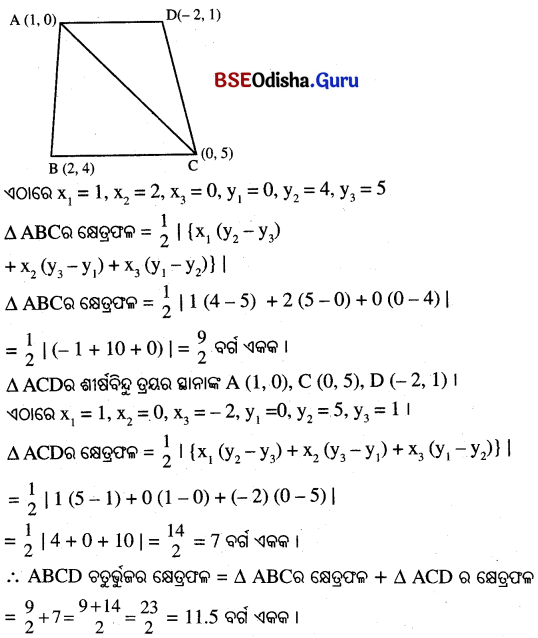
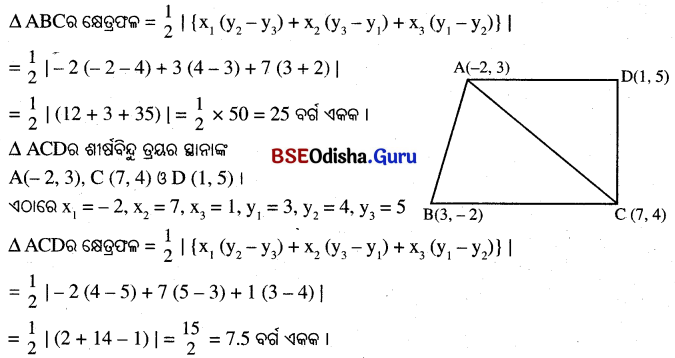
![]()
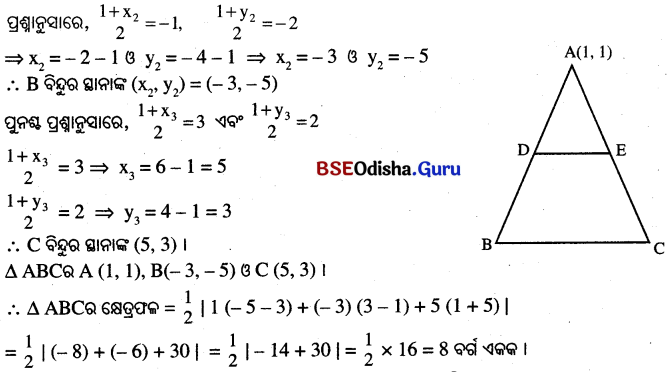
![]()
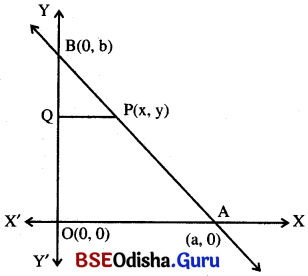
![]()

